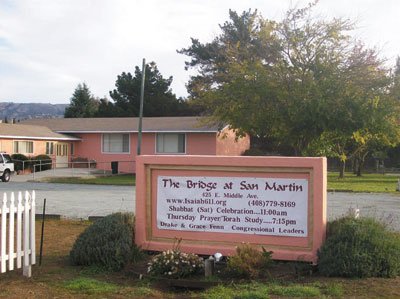”
Chanukah
”
(also spelled
”
Hanukkah
”
because exact English-Hebrew letter equivalents don’t exist).
They may think it has something to do with Christmas because the
holidays occur close together in December each year.
Some people may have heard of a Jewish holiday called “Chanukah” (also spelled “Hanukkah” because exact English-Hebrew letter equivalents don’t exist). They may think it has something to do with Christmas because the holidays occur close together in December each year. In fact, the timing is strictly coincidental. Chanukah has its own ancient story, one which predates Christianity and continues to resonate today.
In the year 164 B.C.E. (Before Common Era) a guerrilla war waged by the Israelite Judas Maccabee liberated the Great Temple in Jerusalem from control of a foreign tyrant. Tradition says that the rebels found only enough oil in storage to light the temple lamp for a single day.
A runner was sent to the nearest Mediterranean port for more oil, and the light continued to burn until his return eight days later. It is this miracle marking victory in the fight for Jewish independence which is celebrated each year during the eight nights of Chanukah.
There are many customs which are followed to mark this holiday.
n A “menorah,” a special candelabrum with eight or nine candlesticks, one for each day, plus sometimes a “lighter” candle (“shamash”) is kept in the home – one candle is lit on the first night, two on the second, and so on.
n A favorite food for Chanukah is “latkes,” deep-fried potato pancakes. The pungent aroma of frying oil is another reminder of the miracle of the oil that lasted longer than expected in the temple lamp.
n A popular game played during this time of year is “dreidel,” a spinning top with a different letter of the Hebrew alphabet on each of its four sides. The letters stand for the Hebrew words “a great miracle happened here.” Children start with an equal number of small tokens (like coins, candies, raisins) and each puts one in the middle of the table. When a player spins, he gets something from the middle (depending upon which side of his dreidel faces up when it stops spinning). Then each player puts another token in the middle, and the next player spins.
n Often families read together children’s stories making the theme of Chanukah easier to understand. One of these great themes is freedom of religion, the goal for which the Maccabees fought more than 20 centuries ago. Small gifts may be exchanged, often pertaining to Judaism, but every effort is made to avoid the materialism and commercialism sometimes characterizing this time of year.
Two local religious groups celebrated Chanukah this week:
n Congregation Emeth, South Country’s Reform Jewish body, held a Chanukah Shabbat and party on Friday. Religious School students led the singing, and Hebrew School students led the lighting of the many menorahs brought from homes for the occasion.
n The Bridge at San Martin, a Judeo-Christian church which emphasizes the Hebrew roots of the Christian faith, held two separate observances of Chanukah. On Thursday they held a Candle-lighting Service. Then this evening they will hold a special Hanukkah Celebration with music, children’s presentation, the telling of the Hanukkah story, and a ceremonial lighting of the Hanukkia, their new eight-foot menorah. A special guest will be Rabbi David Zitter of Ahabat Torah Sephardic Synagogue of San Jose. Visitors are welcome to attend, but reservations must be made by calling 779-8169.












